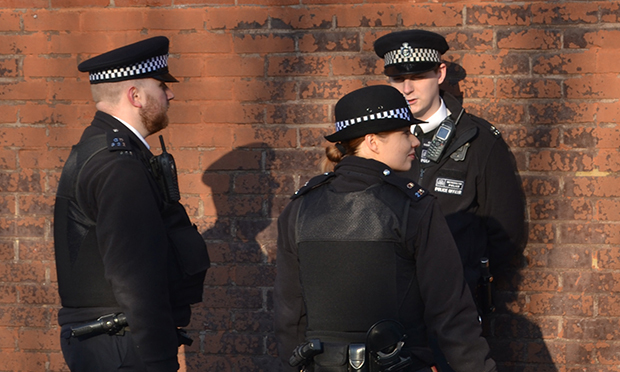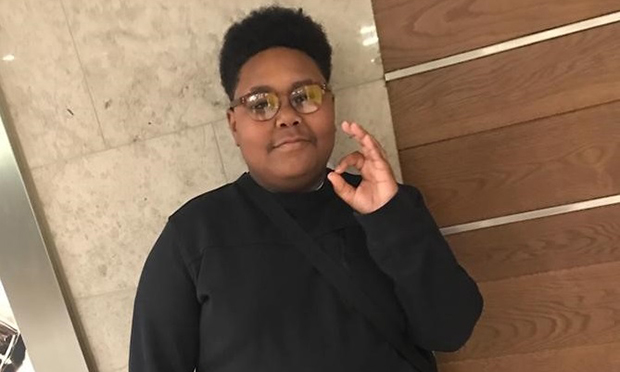‘Built on trust’: Hackney’s Integrated Gangs Unit reveals expansion and ‘evolution’

Three times in recent months, gang members have got in touch with Hackney’s Integrated Gangs Unit (IGU) to check whether videos they plan to upload to social media are too explicit.
The council’s 25-strong team was set up in 2010 to prevent and bring down gang violence by approaching it as a public health issue, as well as enabling officers to take a less “rigid, structured and formulaic response to critical incidents”, according to the Metropolitan Police.
Over the past 18 months, the IGU has undergone a process of evolution to work not just with 150 known gang members, but has expanded its focus to safeguard 40 young people from becoming involved at all, and central to the entire enterprise is establishing and maintaining consistent bonds of trust.
Community gangs co-ordinator and former care home manager Mark Barton said: “The relationships we have in the community reduced some of the tensions over the past few weeks. My role really is not just about the negatives, but the positives.
“Having lived in Hackney most of my life, my role is really about empowering the community, because we can’t do this alone. It’s about the community empowering themselves.
“Three times recently, gang members have contacted us and police to say, ‘We’ve done a video. Is it too explicit?’ They actually contact the police. So we’ve seen how a good relationship works between the police and the community that they contact a police officer and say, ‘Is this OK?'”
A large part of Barton’s work is reaching out to and befriending offenders in custody, who make up a third of those with whom the IGU work at any given time, with part of his role to attempt to “map out” an individual or group’s circumstances in order to more successfully avert violence.
The team’s aim is not to criminalise people, but to actively safeguard individuals who are at risk of being groomed and exploited by gangs, many of whom are already known to social workers.
He added: “You need to find out what the conflict is about. Is it about resources, drugs? Is it about revenge? Or is it about respect? You’re looking at how to identify how to reduce those kinds of conflicts. So we don’t rush in, thinking, ‘Okay, it’s gang-related, so it’s drugs.'”
Through community-based intelligence shared by council, police and voluntary sector officers, the IGU does its best to predict and head off violence before it occurs.
In one example, drill music videos uploaded to YouTube from one particular area of the borough caused immediate concern amongst IGU members, resulting in a swiftly-arranged football event “to take the sting out of it before it’s happened”, as community safety partnerships manager Maurice Mason puts it.
In another case, a young person, judged by the IGU in partnership with Hackney social workers to be at risk of becoming involved in gang crime, was moved out of London for a number of weeks.
Community safety partnerships manager Mason said: “One of the primary strengths of the IGU is to look at the causes and effects of this kind of activity. Its raison d’etre is to reduce serious violence associated with gangs, and it’s evolved since then.
“It’s about sharing information across the partnership, which back in the day was not done routinely.
“Young Hackney data, children and families data and police data is shared within partners. Within the IGU we have an intelligence hub which is able to acknowledge the data and draw out some meaningful hypotheses that then inform where the small amount of resources should be placed to reduce the problem.
“Under the old style, the IGU concentrated just on the 150 paid-up gang members, so the public health model in my opinion which does actually strive to integrate all the services and make the approach we take mainstream I think is developing nicely.”
There have been concerns raised in the past on the IGU’s use of the controversial ‘gangs matrix’, which Amnesty International demanded to be scrapped over accusations of racial discrimination.
According to Cllr Caroline Selman (Lab, Woodberry Down), cabinet member for community safety, what information can and can’t be shared within the IGU is taken “very seriously, and there are always lines about what can and can’t be shared in what context and for what purpose it’s being shared”.
The IGU’s main objective is to prevent gang-related deaths from happening in the first place – however, the work has also transformed the police’s response to serious incidents, with the support and outreach provided by the team also called upon following deaths resulting from other types of violent crime.
The murders of Steven Brown, Joshua White and Tashaûn Aird in the opening months of the year sparked fear and grief across the borough.
According to Barton, the IGU acted quickly to help calm community tensions in the immediate aftermath of the tragic deaths, and to prevent further incidents.
Police detective superintendent Mike Hamer said: “Even within the ‘golden hour’ [the initial stages of a police investigation], Mark and his team will already know something’s happened, either because he’s been told directly or because we now have the confidence to tell Mark and his team through the IGU.
“So already in terms of heading something off that might happen in response an hour or two later, we are down the road to understanding the motivation, which will support the investigation and prevent incidents happening round the corner.
“I’ve been in the police long enough to know that if you have one incident, you can have a number of incidents shortly afterward.”

In the case of 15-year-old Tashaûn’s murder in May, between 15 and 20 people needed some form of ‘intervention’ in the immediate aftermath of his death, which would not have happened in previous years, according to Hamer.
He added: “I think our response to a critical incident was quite rigid, structured and formulaic in the past. The police would respond in the ‘golden hour’ following the incident, at some point down the line we would engage partners, at some point we would engage the community.”
Working with specially-commissioned organisations including St. Giles Trust, Mentivation Services and EMpower, the IGU’s approach in Hackney is spreading, one of the first pieces of practice to be exported to Tower Hamlets when the two boroughs’ police forces merged.
Through its partners, the team offers a wide range of different types of support, from EMpower working with young people who have experienced gang-related sexual exploitation to St. Giles providing direct education and support to prevent offending.
The Crib’s Parents Voice project is also partnered with the IGU to help parents on how to prevent their children becoming involved in gangs and helping them to spot the signs early, as the council continue to try to manage the wider impact of gang violence on the community.
Cllr Selman said: “As concern has gone up and media attention has gone up, what you also find is a wider set of people who are potentially concerned and impacted by it who might not have been previously.
“You can be a young person who’s not involved in anything at all, and still be impacted. It’s about picking up what’s happening in our youth hubs, where you may have got a set of young people who are concerned in the aftermath of an incident who might not be directly involved in any way, but who might have concerns.”
Hackney Council continues to champion the IGU’s work with one of its founding principles – ‘you cannot arrest your way out of crime’.
Hamer points out that it is hard to directly track the success of the team’s work through tracking deaths or violence that are prevented from happening, though the statistics support an argument for the IGU being held up as an ‘exemplar’ by all involved.
Two years ago, over half of knife injuries in young people under the age of 25 in the borough were gang-related, meaning that the IGU collectively assessed a gang motivation to the injury or it directly involved a paid-up gang member.
These figures have now halved, down to 24 per cent in the last year, though Cllr Selman is quick to stress that even one death as a result of gang-related violence remains too many.
Selman said: “Enforcement is part of it, but there is also a focus on diversion and intervention. Key to any success of the IGU is about it being built on trust – trust between people in the unit working together, but also the ability to build up trust with the people that the IGU is working with.
“Having that credibility to work with people to secure change is important, but also crucially consistency. You can’t do a snapshot one-off project, it takes a consistency of approach.
“That also comes from having a consistency of funding. We’ve had several manifestos over the period, but we’ve kept a consistency of recognising the importance that the IGU plays within the borough.
“The core aim is to bring down gang-related serious violence. While there is still a long way to go, it is continuing to have an impact.”
EDIT – this article was updated at 18:35 on Tuesday 4 June to make clear that the IGU also provides support and outreach in the aftermath deaths resulting from other types of violent crime.
